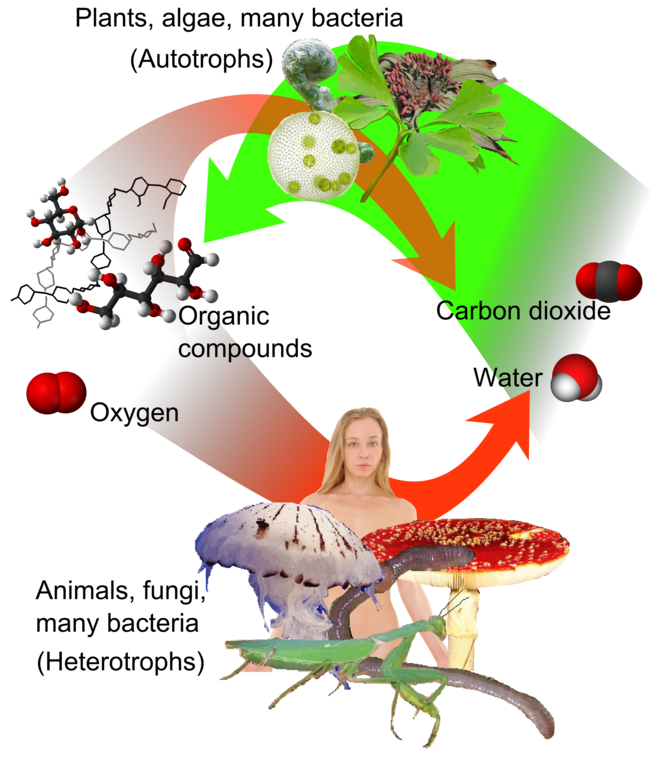
Main Difference
The main difference between Autotroph and Lithotroph is that the Autotroph is a organism that produces complex organic compounds (such as carbohydrates, fats, and proteins) from simple substances present in its surroundings, generally using energy from light (photosynthesis) or inorganic chemical reactions (chemosynthesis) and Lithotroph is a organism using inorganic substrate (usually of mineral origin) to obtain reducing equivalents for use in biosynthesis (e.g., carbon dioxide fixation) or energy conservation (i.e., ATP production) via aerobic or anaerobic respiration.
-
Autotroph
An autotroph or producer, is an organism that produces complex organic compounds (such as carbohydrates, fats, and proteins) from simple substances present in its surroundings, generally using energy from light (photosynthesis) or inorganic chemical reactions (chemosynthesis). They are the producers in a food chain, such as plants on land or algae in water (in contrast to heterotrophs as consumers of autotrophs). They do not need a living source of energy or organic carbon. Autotrophs can reduce carbon dioxide to make organic compounds for biosynthesis and also create a store of chemical energy. Most autotrophs use water as the reducing agent, but some can use other hydrogen compounds such as hydrogen sulfide. Some autotrophs, such as green plants and algae, are phototrophs, meaning that they convert electromagnetic energy from sunlight into chemical energy in the form of reduced carbon.
Autotrophs can be photoautotrophs or chemoautotrophs. Phototrophs use light as an energy source, while chemotrophs use electron donors as a source of energy, whether from organic or inorganic sources; however in the case of autotrophs, these electron donors come from inorganic chemical sources. Such chemotrophs are lithotrophs. Lithotrophs use inorganic compounds, such as hydrogen sulfide, elemental sulfur, ammonium and ferrous iron, as reducing agents for biosynthesis and chemical energy storage. Photoautotrophs and lithoautotrophs use a portion of the ATP produced during photosynthesis or the oxidation of inorganic compounds to reduce NADP+ to NADPH to form organic compounds.
-
Lithotroph
Lithotrophs are a diverse group of organisms using inorganic substrate (usually of mineral origin) to obtain reducing equivalents for use in biosynthesis (e.g., carbon dioxide fixation) or energy conservation (i.e., ATP production) via aerobic or anaerobic respiration. Known chemolithotrophs are exclusively microorganisms; no known macrofauna possesses the ability to use inorganic compounds as energy sources. Macrofauna and lithotrophs can form symbiotic relationships, in which case the lithotrophs are called “prokaryotic symbionts”. An example of this is chemolithotrophic bacteria in giant tube worms or plastids, which are organelles within plant cells that may have evolved from photolithotrophic cyanobacteria-like organisms. Lithotrophs belong to either the domain Bacteria or the domain Archaea. The term “lithotroph” was created from the Greek terms ‘lithos’ (rock) and ‘troph’ (consumer), meaning “eaters of rock”. Many lithoautotrophs are extremophiles, but this is not universally so.
Different from a lithotroph is an organotroph, an organism which obtains its reducing agents from the catabolism of organic compounds.
-
Autotroph (noun)
Any organism that can synthesize its food from inorganic substances, using heat or light as a source of energy.
-
Lithotroph (noun)
An organism that obtains its energy from inorganic compounds (such as ammonia) via electron transfer.
-
Autotroph (noun)
an organism that is able to form nutritional organic substances from simple inorganic substances such as carbon dioxide.
